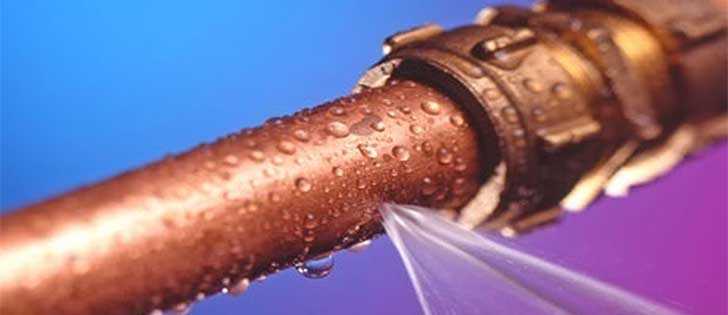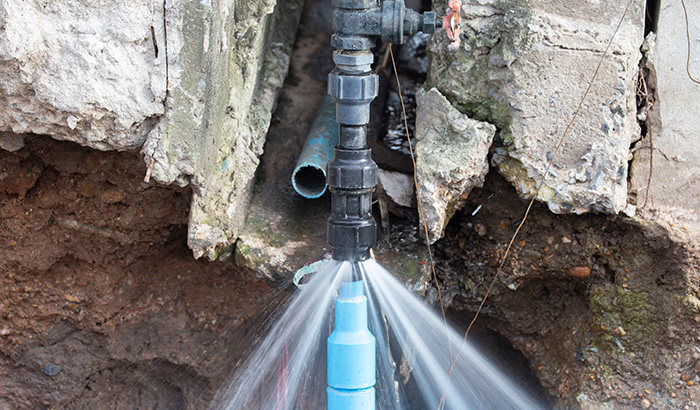The Hidden Dangers of a Burst Pipe and How to Fix It Quickly
The Hidden Dangers of a Burst Pipe and How to Fix It Quickly
Blog Article
Avoiding Burst Pipes: Crucial Tips to Shield Your Pipes
Protecting against burst pipelines is a crucial problem for home owners, particularly throughout cooler months when the danger of freezing is increased. Implementing strategic measures such as proper insulation, regular inspections, and maintaining constant indoor temperatures can dramatically minimize the probability of pipeline failing.
Understand Pipeline Vulnerabilities
Recognizing pipeline vulnerabilities is crucial for efficient pipes upkeep and protecting against costly damage. A number of variables add to the sensitivity of pipes to ruptureds, including material structure, age, and ecological problems. Older pipelines, specifically those made from galvanized steel or polybutylene, typically weaken with time, causing raised danger of leaks and ruptures.
Temperature level fluctuations can also considerably effect pipeline stability. In chillier climates, water trapped in pipelines can freeze, applying and expanding stress on the pipe walls, which might inevitably result in a burst. High water stress can stress pipes, particularly at bends and joints, enhancing the possibility of failing.

Insulate Pipes Correctly
Appropriate insulation of pipes is vital for avoiding freezing and succeeding ruptureds throughout chilly weather (burst pipe). Protecting your pipes system properly safeguards against temperature drops that can bring about pricey damages. Begin by identifying susceptible locations where pipelines are revealed to outside temperatures, such as basements, attics, and exterior walls
Usage foam pipeline insulation sleeves or cover insulation tape around these locations to offer a protective obstacle. Make certain that all areas of the pipelines, particularly those with minimal heat direct exposure, obtain ample insulation. Pay unique focus to fittings and joints, as these are more at risk to freezing.
When insulating, it's necessary to select products that meet regional building regulations and are ideal for the particular setting. Fiberglass insulation is typically suggested for its thermal resistance properties. Furthermore, consider utilizing warm cords or tape in severe problems, which can be plugged in to offer supplemental warm
Regularly evaluate shielded pipes for any indications of wear or damages, as endangered insulation can lessen its effectiveness. By taking these positive steps, you substantially minimize the threat of pipe ruptureds, making certain a trusted plumbing system throughout the winter months.
Maintain Consistent Temperature
A secure indoor temperature level is necessary for protecting against ruptured pipelines during the frigid months. When temperatures decrease, water within pipes can ice up, developing and broadening pressure that might ultimately create the pipelines to burst. To mitigate this danger, homeowners need to maintain a consistent temperature throughout their living room, ideally no less than 55 ° F(13 ° C)Utilizing a programmable thermostat can help manage interior temperatures effectively, guaranteeing that spaces with plumbing remain go to this web-site warm also when your home is empty. Pay unique focus to locations that are extra susceptible to cold, such as basements, attic rooms, and garages. Keeping closet doors open under sinks can also enable warmer air from the home to flow around plumbing.
This small circulation of water can prevent freezing by minimizing pressure within the pipes. By implementing these methods, house owners can dramatically decrease the threat of pipe ruptureds and guard their plumbing systems versus the harsh winter components.
Regularly Inspect Plumbing
Regular assessments continue reading this of plumbing systems are critical for stopping ruptured pipes and preserving total home integrity. Regular checks allow homeowners to determine possible concerns before they escalate into expensive repair work or significant water damages. During these inspections, it is important to take a look at noticeable pipelines for signs of corrosion, leaks, or use. Pay unique interest to areas susceptible to cold, such as basements, attic rooms, and exterior wall surfaces.
Furthermore, inspecting connections and joints is essential, as these factors are usually at risk to leaks. Homeowners must likewise analyze water stress levels, as too much stress can stress the plumbing system and enhance the threat of pipe ruptureds.
Think about scheduling specialist pipes examinations a minimum of annually, especially before winter months, to guarantee your system is prepared for cooler temperature levels. Regular assessments not only aid in identifying immediate issues but likewise foster long-term maintenance approaches that can boost the life-span of your pipes system. By being proactive in your strategy, you can secure your home versus the expensive and disruptive repercussions of burst pipelines. Focusing on pipes assessments is an investment in your house's health and wellness.
Know Emergency Procedures
Comprehending emergency situation treatments is essential for every homeowner, particularly after carrying out normal pipes assessments. Being prepared for a plumbing emergency can dramatically mitigate damage and conserve costs.
Following, maintain vital tools convenient. A pipes emergency kit need to consist of a wrench, bettor, and towels, along with a flashlight and a bucket for little leakages. Furthermore, consider having the call details for a relied on plumbing easily offered, must the situation rise beyond your control.
If you discover a leakage or burst pipeline, immediately shut off the try here water and notify your plumber. Moreover, document the damages with pictures for insurance policy objectives. burst pipe. Understand the signs of potential pipes concerns, such as unusual water stress fluctuations or damp spots on walls
Eventually, aggressive understanding and speedy activity are crucial in managing plumbing emergency situations, ensuring your home stays protected and reducing potential damage.

Conclusion
In verdict, avoiding ruptured pipes requires a complex technique that consists of understanding pipe vulnerabilities, correct insulation, preserving regular indoor temperatures, routine assessments, and knowledge of emergency situation procedures. By carrying out these essential techniques, the danger of pipes failings can be considerably lowered, therefore making sure the durability and effectiveness of the pipes system. Positive actions not just secure against possible damages but likewise add to total water conservation and the protection of property.
In colder environments, water trapped in pipes can ice up, increasing and exerting pressure on the pipe walls, which might ultimately lead to a burst. When temperature levels decrease, water within pipelines can freeze, creating and broadening pressure that might eventually cause the pipes to burst. By applying these strategies, property owners can substantially lower the risk of pipe bursts and secure their plumbing systems against the rough winter season aspects.

Report this page